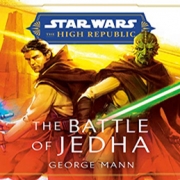Blogging to Explain Cultural Icons
As I browsed through the magazine rack at my neighborhood CVS, two publications caught my attention: Star Wars: The Battle of Jedha and The Ultimate Guide to Avatar. Here were two examples, of gigantic cultural icons, I recognized, yet two subjects I know very little about. Realizing a need to “get with it”, I added both magazines to my shopping cart…
A cultural icon, Wikipedia explains, is a person or an artifact that is identified by members of a culture as representative of that culture. In writing, when we allude to an icon, the expectation is that our readers will understand the idea we’re trying to express, because they’ll recognize the expression. In fact, when content writers want to liven up a blog post, they might refer to a weakness as “an Achilles heel”, or describe a selfish person as “a Scrooge”, or refer to Alice in Wonderland when talking about going “down the rabbit hole”.
What was so appealing to me about the two publications about Star Wars and Avatar was that the publishers didn’t assume I understood those two cultural icons. Just the opposite – each was there to explain and clarify, so that I could feel “in on the secret”. Sure, at Say It For You, we suggest livening up business blog content using allusions. But, what if, as content writers, we’ve miscalculated our readers’ ability to recognize the allusions, with the danger being them finding our content frustrating rather than illuminating!
In fact, one way in which blog posts can be of use to searchers is helping them feel, empowered and informed, “caught up” on the significance and the meaning of certain events or expressions, things it appears “everybody knows”, but which they have somehow never really understood.
“We’re living in an age of entertainment extremism, where passionate fans go to ludicrous lengths to engage in hyperbolic talking points about their favorite film or franchise. It can be exhausting, wading through social media and hearing people make bold declarations not based on anything remotely resembling the truth,” flickeringmyth.com observes.” Most successful blockbuster franchises cross into other mediums spawning books and graphic novels that propel the myths forward.”
Because allusions make reference to something other than what is directly being discussed, explains yourdictionary.com, you may miss an allusion or fail to understand it if you do not know the underlying story, literary tale or other reference point. Why not use blog content writing to help empower visitors with a better understanding of the reference points they encounter?
My insight from the magazine rack? Blog to explain those cultural icons!
.


Leave a Reply
Want to join the discussion?Feel free to contribute!